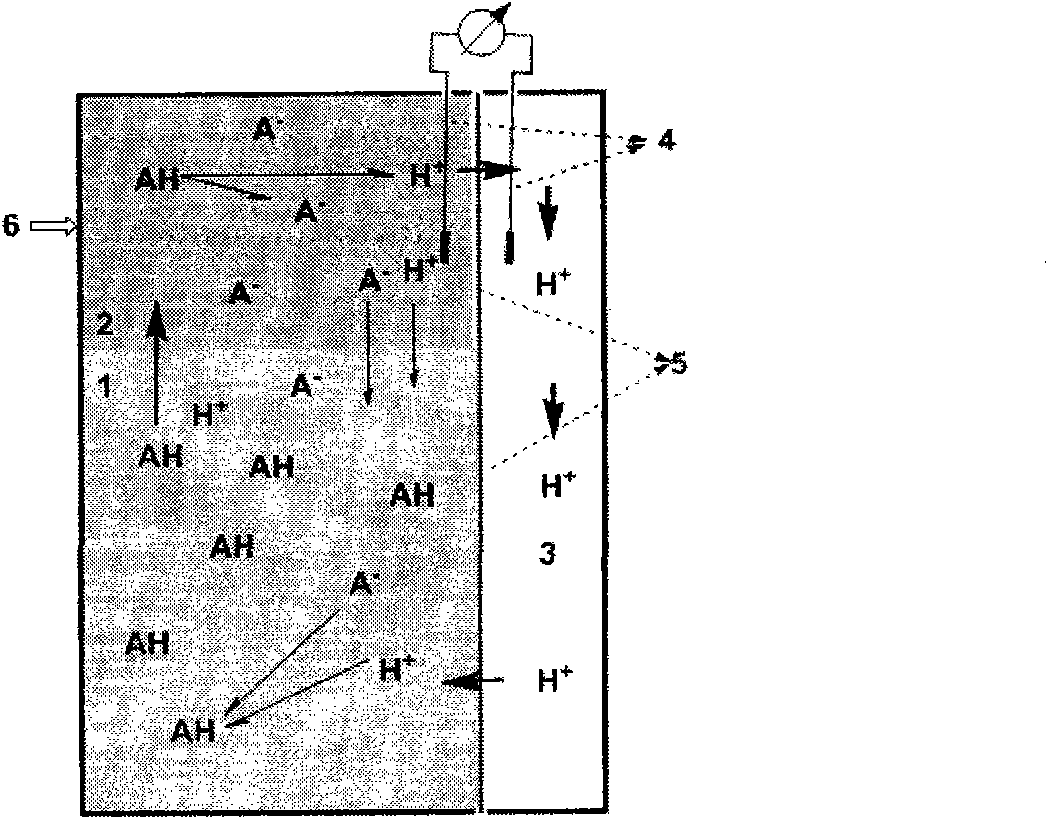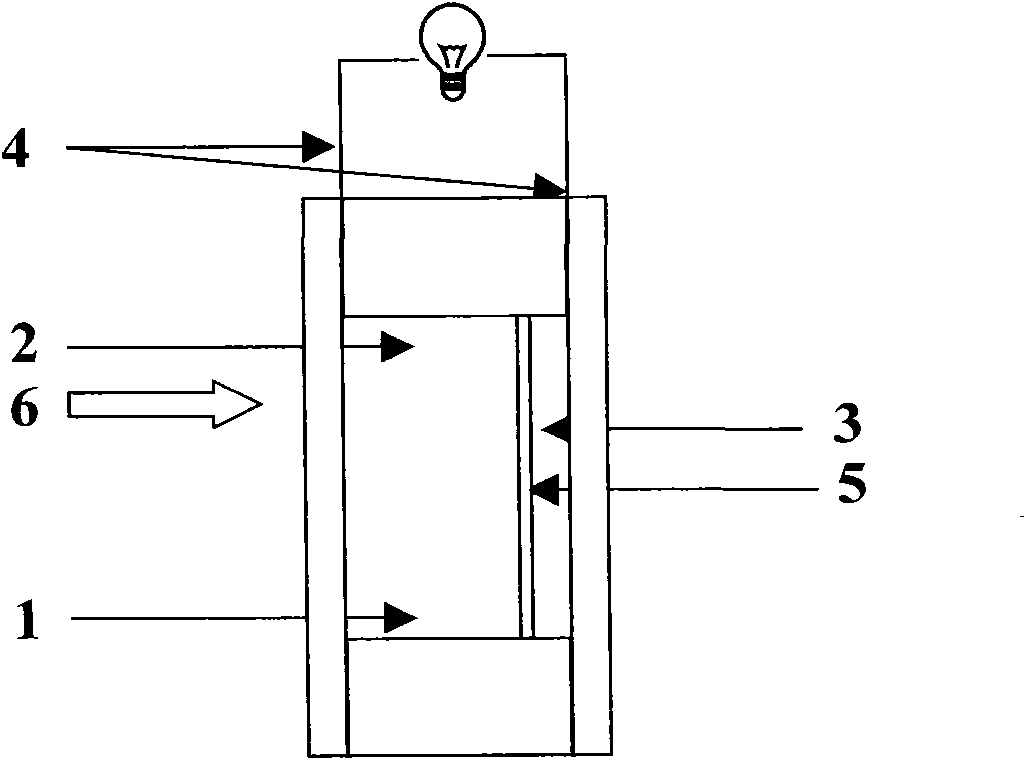Photo-induced protonized solar battery
A solar cell, light-induced technology, applied in the direction of delayed action cells, etc., can solve the problems of secondary pollution of the environment, shortage of non-renewable primary energy, etc., and achieve the effect of not being limited by space and having broad application prospects.
- Summary
- Abstract
- Description
- Claims
- Application Information
AI Technical Summary
Problems solved by technology
Method used
Image
Examples
Embodiment 1
[0048] See figure 1 and figure 2 . The light-induced protonation solar cell includes a closed container as a photoelectrochemical cell, which only allows the hydrogen ions that can be induced by photoacid molecules in water to pass through, and does not allow the anions produced by the photoacid molecules themselves and the photoacid molecules after light irradiation. Permeated as a cation exchange membrane 5 containing -SO 3 The perfluorinated polyethylene cation exchange membrane of H strongly acidic active group, the pyrene photoacid molecule of the aforementioned formula 4 structure that can produce hydrogen ion through light induction in water (this photoacid molecule is in figure 1 Expressed by AH, the anion generated after the decomposition of AH is represented by A - Indicates) and the platinum electrode 4.
[0049] The said containing-SO 3 The perfluorinated polyethylene cation exchange membrane of H strong acidic active group is connected to the four inner wall...
Embodiment 2
[0057] Change the volume ratio of the first container to the second container to be 1 / 10, the photoacid molecule used in the first container is the naphthalene photoacid molecule with the structure of the aforementioned formula 1 and its concentration is 1 μM, and the cation exchange membrane contains -OPO 3 h 2 Polyvinyl chloride cation-exchange membrane with active groups, the light intensity used when illuminating is 10mWcm -2 . Other conditions are with embodiment 1.
[0058] See figure 1 and figure 2 . The light-induced protonation solar cell includes a closed container as a photoelectrochemical cell, which only allows the hydrogen ions that can be induced by photoacid molecules in water to pass through, and does not allow the anions produced by the photoacid molecules themselves and the photoacid molecules after light irradiation. permeated as cation exchange membrane 5 containing -OPO 3 h 2 The polyvinyl chloride cation exchange membrane of the active group, the...
Embodiment 3
[0065] When the volume ratio of the first container to the second container is 1 / 2, change the light transmission area of the side wall so that the area of the part that can transmit light accounts for 1 / 10 of the total area of the side wall. Circuit connection, other conditions are the same as embodiment 1.
[0066] See figure 1 and figure 2 . The light-induced protonation solar cell includes a closed container as a photoelectrochemical cell, which only allows the hydrogen ions that can be induced by photoacid molecules in water to pass through, and does not allow the anions produced by the photoacid molecules themselves and the photoacid molecules after light irradiation. Permeated as a cation exchange membrane 5 containing -SO 3 The perfluorinated polyethylene cation exchange membrane of H strongly acidic active group, the pyrene photoacid molecule of the aforementioned formula 4 structure that can produce hydrogen ion through light induction in water (this photoa...
PUM
 Login to View More
Login to View More Abstract
Description
Claims
Application Information
 Login to View More
Login to View More - Generate Ideas
- Intellectual Property
- Life Sciences
- Materials
- Tech Scout
- Unparalleled Data Quality
- Higher Quality Content
- 60% Fewer Hallucinations
Browse by: Latest US Patents, China's latest patents, Technical Efficacy Thesaurus, Application Domain, Technology Topic, Popular Technical Reports.
© 2025 PatSnap. All rights reserved.Legal|Privacy policy|Modern Slavery Act Transparency Statement|Sitemap|About US| Contact US: help@patsnap.com



